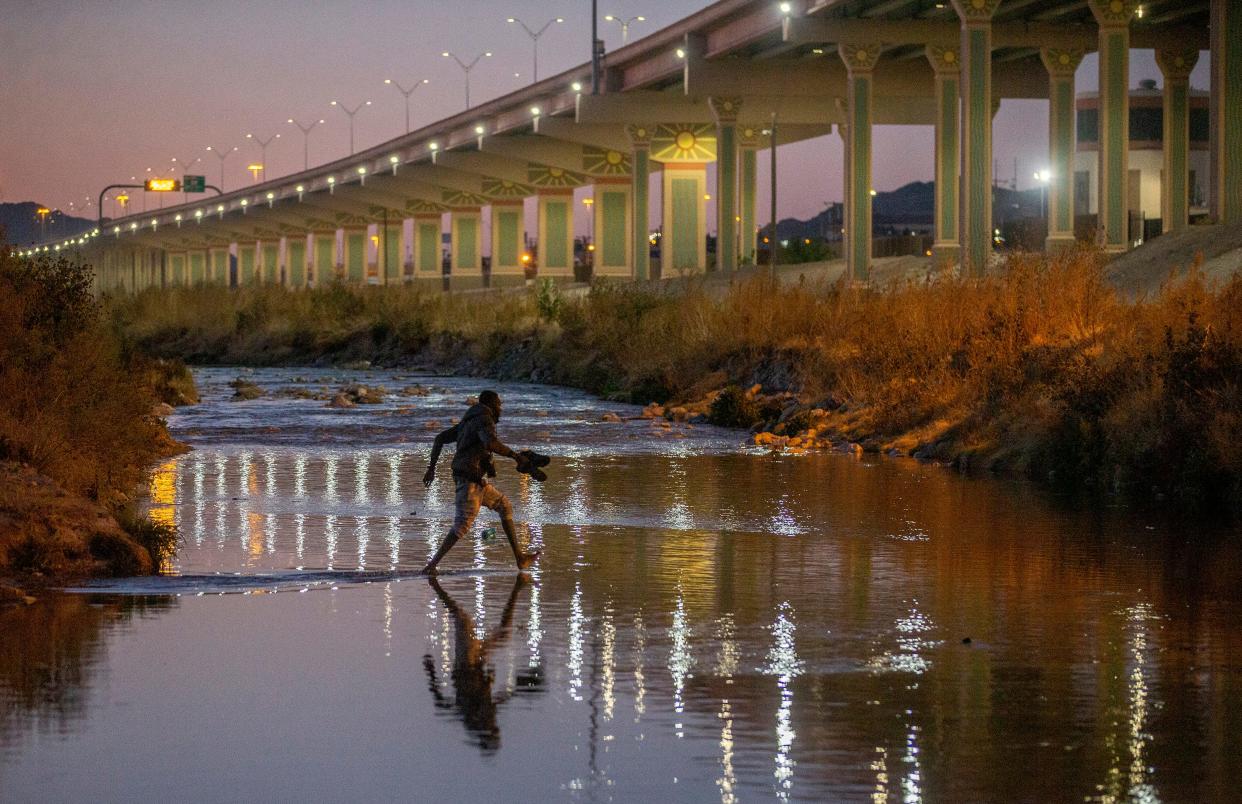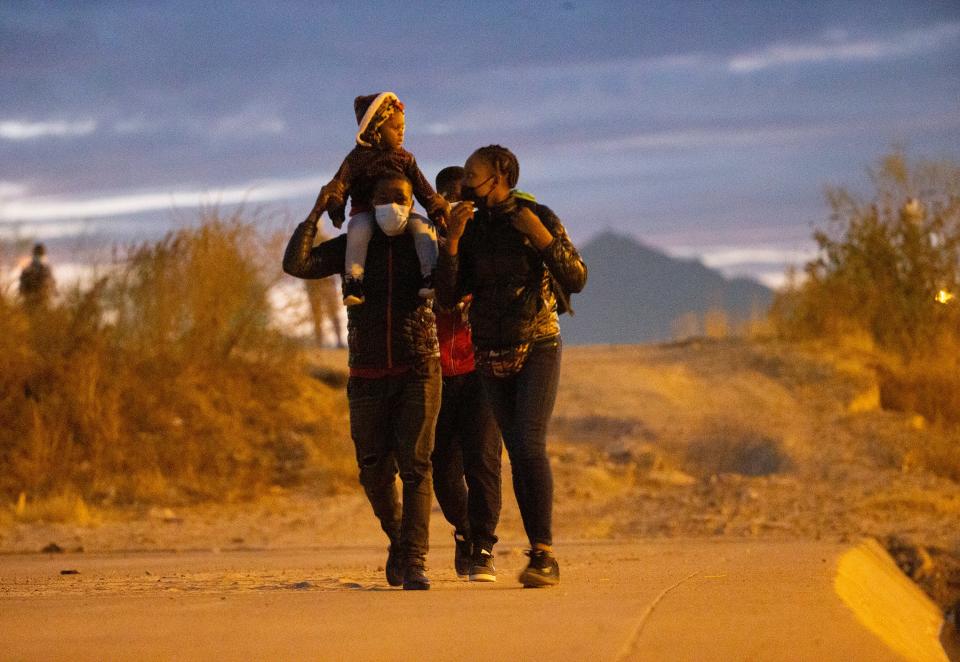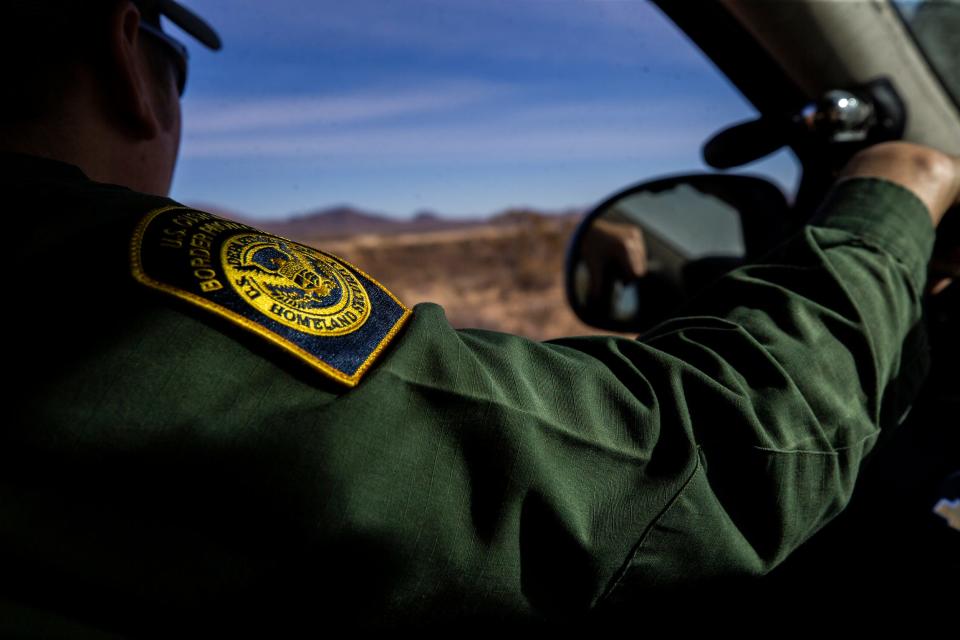Border Patrol: Migrant encounters climb 71% in El Paso region in first quarter of FY2022

COLUMBUS, N.M. — On an icy Wednesday morning in January, Border Patrol Agent Joel Freeland cruised along a stretch of border wall where someone on the Mexico side had blow-torched through a set of steel flood gates west of the port of entry.
Unauthorized border crossings climbed 71% in Border Patrol's El Paso Sector in the first quarter of fiscal 2022, compared to the same three-month period a year ago. U.S. Customs and Border Protection reported 49,012 encounters October through December in the sector that includes West Texas and New Mexico, up from 28,553 in the first quarter of fiscal 2021.
Voices cracked over a Border Patrol radio as agents shared notes about footprints they were following: patterns of circles and rainbows on the soles of shoes likely belonging to migrants moving north through the desert.
Another agent came over the radio: "That group was app'd (apprehended)," he said, confirming that the footprints were old. It wasn't known, yet, whether the footprints of the apprehended migrants belonged to the same group that cut through the wall or if they had succeeded in evading agents.
Migrants from a dozen nations
People from increasingly diverse backgrounds are crossing the U.S.-Mexico border without permission and attempting to evade agents, often making multiple attempts after being quickly returned to Mexico under the pandemic Title 42 policy. The policy has reduced opportunities for migrants to legally claim asylum in the U.S.
On the day in mid-January when Freeland patrolled the ranches and farmland adjacent to the Mexican border, agents in El Paso Sector encountered or apprehended migrants from Mexico, Guatemala, Haiti, Nicaragua, Honduras, El Salvador and Cuba — the majority. Agents also encountered people from Chile, Brazil, Ecuador, Venezuela, Sri Lanka and Peru.

"We are seeing an increase in nationalities," said Border Patrol El Paso Sector Chief Gloria Chavez.
The diversity in the migrant population "presents linguistic challenges," she said. Agents sometimes use translation applications on their smartphones to communicate with migrants in the field. At processing centers, Border Patrol has put up "I speak" posters with a long list of languages migrants can point to, for an agent to contact an interpreter.
An ongoing pandemic policy
Border Patrol began reporting "encounters" with migrants in addition to "apprehensions" at the onset of Title 42, a public health law invoked by the Centers for Disease Control and Prevention to prevent border control agencies from detaining people in congregant settings, such as holding stations.
In a Title 42 "encounter," Border Patrol quickly returns migrants to Mexico or their home country. The policy has resulted in individuals attempting to cross the border multiple times, inflating the number of migrants encountered.
Chavez said Title 42 "protects the agents and it protects the migrants they encounter."
"We all know that migrants in a congregant setting, or any human being as a group, it increases the chances of the virus spreading quickly," she said. "Title 42 has been a great tool for us to use in the field to keep everyone safe."

Immigrant advocates say the pandemic policy — originally put in place under the Trump administration in March 2020 and extended by the Biden administration — effectively prevents asylum seekers from seeking legal protection in the United States.
Some public health experts have also decried the policy as being xenophobic and untethered from science.
Dozens of medical doctors and public health scholars signed an open letter to CDC Director Dr. Rochelle Walensky in September, calling for an end to the application of Title 42 at the U.S.-Mexico border.
"Rather than continuing to rely on a discriminatory and unjustifiable order," the signatories wrote, "U.S. authorities should adopt measures that are based on sound science and public health practice, and that comply with U.S. law and treaty obligations towards refugees and asylum-seekers."
Of the encounters in October, November and December, 68% or 33,558 were processed under Title 42. Eighty-six percent, or 24,696, were processed under Title 42 in the comparable period a year ago.
Quiet morning, busy day
North of the border wall flood gates, four Border Patrol agents in jeans and boots stood next to a horse trailer parked on the dirt shoulder of Highway 9. They would cover the desert terrain on horseback in search of the group that might have gotten away.
The morning was otherwise quiet in Border Patrol El Paso Sector's Deming station, masking how busy agents were further west over the Apache Mountains and in Santa Teresa, near El Paso's city limits.
Across El Paso sector that day, Border Patrol logged 510 encounters in a 24-hour period, making El Paso the third-busiest of nine Border Patrol sectors, behind Del Rio and the Rio Grande Valley in Texas.
Lauren Villagran can be reached at lvillagran@elpasotimes.com.
This article originally appeared on El Paso Times: Repeat attempts of migrant crossings fuel surge in El Paso area

